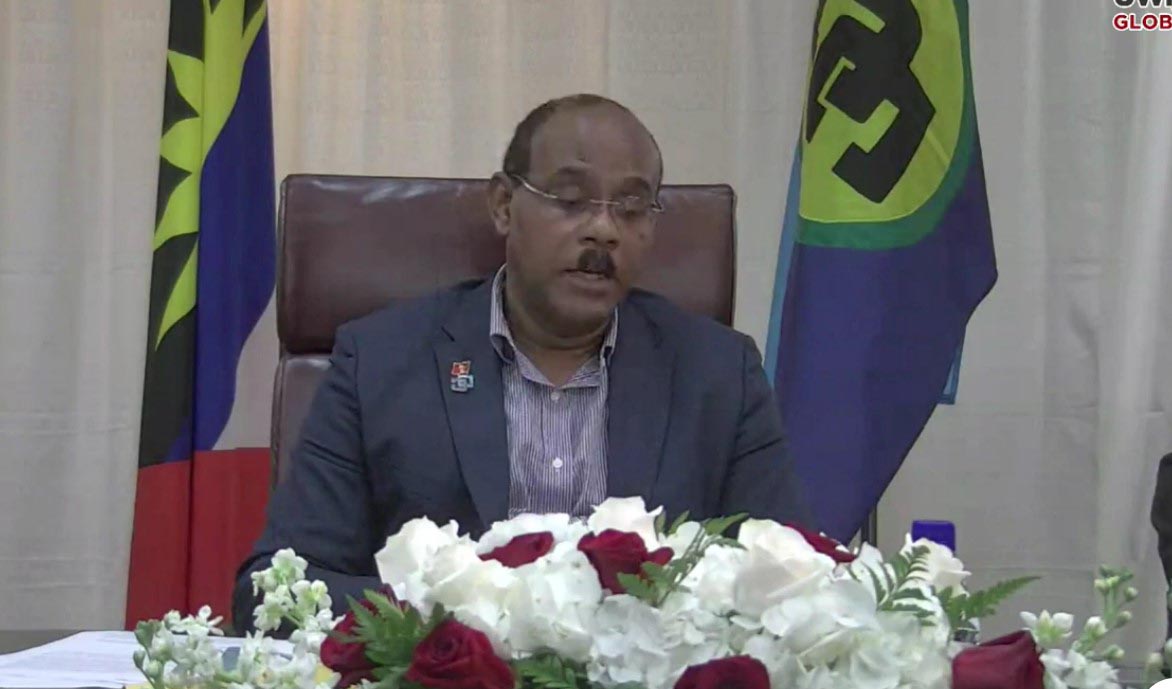In an effort to bolster the regional aviation and tourism sectors CARI-COM has agreed to consider a reduction in taxes for intraregional travel over a six- month period.
The community is also looking to create a regional travel bubble for a period of six months “taking account of lessons learned”.
Following the 42nd Regular Meeting of the Conference of Heads of Government, which was held virtually from July 5-6, new CARICOM Chair Gaston Browne explained that during an interaction with the private sector and civil society it was acknowledged that avia-tion and tourism are struggling.
“We recognised the need to reopen economies while balancing the health and economic livelihood of community nationals and agree that new protocols for health…and sanitation measures are of utmost importance in encouraging the resuscitation of the tourism sector,” he told a virtual press conference last night.
Asked by Stabroek News to explain what parameters will guide the establishment of this bubble, Browne, the Prime Minister of Antigua and Barbuda explained that there will be a meeting next week to make a final determination on the same.
He explained that with expert input from the Caribbean Development Bank there is a commitment to reduce regional travel taxes to lower the price of tickets and assist airlines which are teetering on the edge of bankruptcy.
“There is a commitment to facilitate the movement of vaccinated persons but no final determination on testing,” he said.
Browne explained that the Caribbean Public Health Agency (CARPHA) has recommended that vaccinated individuals should still produce a negative PCR test before intraregional travel. The expectation is that with this negative test result quarantine times can be curtailed from 14 days to possibly 48 hours.
He stressed that these parameters are not yet conclusive and said that the Community is also working to develop a cohesive vaccination policy.
CARICOM had previously tried to implement a travel bubble. Last September a similar initiative was implemented to bolster the faltering travel and tourism industries. At that time CARICOM heads were guided by a comprehensive report from CARPHA which provided recommendations on how the bubble would operate, and laid out the eligibility criteria for countries to participate.
The recommendations included that countries would be categorised ranging from those with no cases to those which had low, medium, high and very high risk with respect to the rate of positive cases over a 14-day period; the level of risk would be determined by the amount of positive cases per 100,000 of the population within a 14-day period; only those countries with no cases and those in the low-risk category were to be allowed to participate in the bubble; and CARPHA was tasked with assessing relevant data to advise on participation in the bubble.
Heads of Government had agreed that travellers from countries within the bubble would be allowed entry without being subjected to PCR testing prior to arrival and would also not have to undergo quarantine restrictions. Travellers however could be subjected to screening on arrival.
It was Browne who two months later announced that the bubble had burst following the withdrawal of first Grenada then St Vincent and the Grenadines, and later St Kitts and Nevis and Barbados.
The fallout related to inconsistent containment protocols across different territories with Dr Timothy Harris, the St Kitts and Nevis prime minister noting that “Participation in the CARICOM bubble with countries of higher risk assessment and less stringent protocols would expose citizens and residents to elevated health risks.”
Asked last evening if CARICOM had failed to be unified in the fight against COVID-19, Browne said all countries had done well in managing transmission.
“You can’t have a common opening this will be determined by the epidemiological situation in each country.





